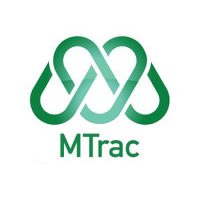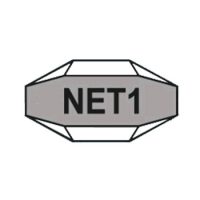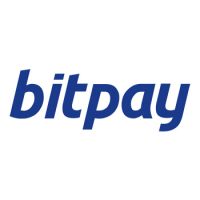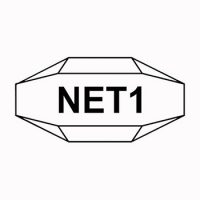Blockchain
Umbria Network’s Narni Cross-chain Bridge Now Supports ETH and MATIC

Support for ETH and MATIC has been implemented into Umbria Network’s ultra-low-cost liquidity bridge. The Narni Cross-chain Bridge can now be used for ultra-fast transfers of ETH, MATIC, USDT, and UMBR.
The Narni Bridge connects the Ethereum and Polygon networks, allowing exceptionally quick and cheap cross-chain transfers of native tokens between them. ETH, which was launched first, can be bridged from the Ethereum to Polygon Network for as little as $2.56 in gas, which is significantly less than other bridges. The advantages of utilizing the Narni Bridge made it highly popular among DeFi participants, and have especially caught the attention of the Zed Run community, who had previously been hampered by prohibitively expensive gas fees.
Beyond the advantages offered by the speed and low price of the service, the Narni Bridge also provides an APY that pays liquidity providers. The “Pool and Earn” function allows users to earn APY whenever other participants bridge a specific token between networks, by lending their own tokens to the bridge to provide liquidity. Anyone currently providing ETH to the Polygon pool has received up to an astounding 70% APY with no impermanent loss.
“We’re seeing great momentum now with the Narni Bridge and a very pleasing increase in Total Value Locked (TVL). Lots of people are bridging, which in turn attracts more liquidity providers who are enticed by the interest they can earn on the asset they supply,” said Oscar Chambers, Co-lead developer of Umbria. “More chains and assets are coming online imminently; we’d love to hear from the DeFi community about what they’d like to see next on the Narni Bridge.”
Further information can be found here: bridge.umbria.network/docs.
Blockchain
Halving weakness sees $206 million exit crypto funds, Bitcoin miners pivot to AI

Leading up to Friday’s Bitcoin (BTC) halving, investors opted to remain on the sidelines rather than increase their exposure to cryptocurrencies. CoinShares’ latest report on digital asset fund flows reveals that crypto funds experienced $206 million in outflows last week, while trading volumes for Exchange-Traded Products (ETPs) dropped to $18 billion.
James Butterfill, head of research at CoinShares, noted, “These volumes represent a lower percentage of total Bitcoin volumes (which continue to rise) at 28%, compared to 55% a month ago.” He attributed this decline in investor appetite to expectations that the Federal Reserve would maintain interest rates at elevated levels for a longer duration.
In terms of regional flows, the United States led the outflows with $244 million exiting incumbent ETFs by the week ending April 19. Butterfill highlighted that newly issued ETFs still received inflows, albeit at lower levels compared to previous weeks. Germany and Sweden saw outflows of $8.3 million and $6.7 million, respectively, while Canada experienced inflows of $29.9 million. Switzerland, Brazil, and Australia also witnessed inflows of $7.8 million, $5.5 million, and $2.2 million, respectively.
Butterfill observed that although Bitcoin saw outflows of $192 million, there were minimal flows into short-Bitcoin positions. Ethereum (ETH) experienced outflows of $34 million for the sixth consecutive week. However, multi-asset funds saw improved sentiment, attracting $8.6 million in inflows. Additionally, Litecoin (LTC) and Chainlink (LINK) received inflows of $3.2 million and $1.7 million, respectively.
The report highlighted that blockchain equities sustained their 11th consecutive week of outflows, totaling $9 million, as investors remained concerned about the halving’s impact on mining companies.
In a separate analysis of the post-halving crypto mining industry, CoinShares analysts suggested that many miners might transition to serving the artificial intelligence (AI) sector, which has become more lucrative. They anticipated a shift towards AI in energy-secure locations, potentially leading to Bitcoin mining operations relocating to stranded energy sites.
The analysts projected a 10% decline in the Bitcoin network’s hash rate after the halving as miners deactivate unprofitable ASICs. However, they expected the hash rate to reach 700 exahash (EH/s) by 2025. As of the current data, the Bitcoin hash rate stands at 596.22 EH/s.
The report also noted that substantial cost increases are anticipated due to the halving, with electricity and production costs nearly doubling. Mitigation strategies include optimizing energy costs, enhancing mining efficiency, and securing favorable hardware procurement terms. Miners are actively managing financial liabilities, with some utilizing excess cash to significantly reduce debt.
Source: kitco.com
The post Halving weakness sees $206 million exit crypto funds, Bitcoin miners pivot to AI appeared first on HIPTHER Alerts.
Blockchain
NYSE gauges interest in 24/7 stock trading like crypto

According to reports, the New York Stock Exchange (NYSE) is exploring the possibility of introducing round-the-clock trading, a model akin to that of cryptocurrency markets. In a bid to gauge market sentiment, NYSE’s data analytics team has circulated a survey among market participants. The survey seeks feedback on whether there is support for 24/7 or extended weekday trading hours and, if so, what measures should be implemented to safeguard traders against overnight price fluctuations. As of now, NYSE, alongside Nasdaq and the Chicago Board Options Exchange, operates from Monday to Friday, spanning from 9:30 am to 4:00 pm Eastern Time.
In the United States, assets like cryptocurrencies, United States Treasurys, foreign exchange, and major stock index futures are already tradable 24/7. Certain brokerages, such as Robinhood and Interactive Brokers, provide access to U.S. stocks throughout the week via a “dark pool” trading venue, catering to international retail investors during their local trading hours.
However, recent reports indicated that Robinhood suspended its 24-hour trading services amidst heightened tensions between Israel and Iran, prompting concerns among investors regarding the sustainability of continuous trading.
Effectively managing liquidity in a 24/7 trading environment has proven challenging for trading platforms within the cryptocurrency industry.
According to cryptocurrency research firm Kaiko, there’s often a mismatch between the operating hours of traditional financial institutions and the needs of major crypto traders and market makers. Traders frequently find themselves losing sleep during periods of extreme market volatility.
While the results of NYSE’s survey haven’t been revealed, Tom Hearden, a senior trader at Skylands Capital, conducted his own poll among his 19,300 followers, asking if they would support NYSE transitioning to 24/7 trading hours. Interestingly, over 70% of the 1,459 respondents voted “No.”
NYSE’s survey coincides with the efforts of startup firm 24X National Exchange, which is seeking approval from the Securities and Exchange Commission (SEC) to launch the first exchange in the country operating round-the-clock.
The FT said, citing two persons familiar with the subject, that the SEC has “months” to study the proposed rule change, and other relevant issues, such who should shoulder expenses and the function of clearing houses, are already being considered by other stakeholders.
“How loud they will be playing in the middle of the night is unknown to me. However, the decision of whether something is commercially feasible or not actually shouldn’t be made by the SEC, James Angel, a Georgetown University finance professor, told FT.
“I support letting the market make the decision. We’re all better off if it succeeds, and the exchange’s stockholders lose out if it fails.
After the company withdrew an application in March 2023, alleging operational and technological concerns, it is the second attempt to receive SEC clearance.
Source: cointelegraph.com
The post NYSE gauges interest in 24/7 stock trading like crypto appeared first on HIPTHER Alerts.
Blockchain
Online Banking Market to Grow at CAGR of 14.20% through 2033, Key Takeaways of Digital Banking, Banking Ecosystem, Financial Giants & Disruptive Startups
-

 Blockchain Press Releases6 days ago
Blockchain Press Releases6 days agoCanaan Shines at Blockchain Life 2024 in Dubai
-

 Blockchain6 days ago
Blockchain6 days agoQuantum eMotion Files a Patent for Quantum-based Blockchain Wallet Under the Patent Cooperation Treaty (PCT)
-

 Blockchain5 days ago
Blockchain5 days agoPhoenix Group Engages BHM Capital as Liquidity Provider to Boost ADX Liquidity and Enhance Market Dynamics
-

 Blockchain Press Releases6 days ago
Blockchain Press Releases6 days agoBybit Institutional Report 2024: Institutions Become Bullish and Eye Challenger Chains, while VC Funding Resurges for Infrastructure, Gaming, and AI
-

 Blockchain6 days ago
Blockchain6 days agoElizabeth Warren Urges Treasury Secretary Yellen to Implement Strong AML/CFT Measures for Stablecoins
-

 Blockchain Press Releases7 days ago
Blockchain Press Releases7 days agoBybit and Franck Muller Partner with Sidus Heroes to Launch Cosmic Gears: A Pioneering Web3 Game with a $250,000 Prize Pool and Exclusive Watch Collection
-

 Blockchain5 days ago
Blockchain5 days agoCrypto fans count down to bitcoin’s ‘halving’
-

 Blockchain5 days ago
Blockchain5 days agoTether USDT stablecoin goes live on TON blockchain











































